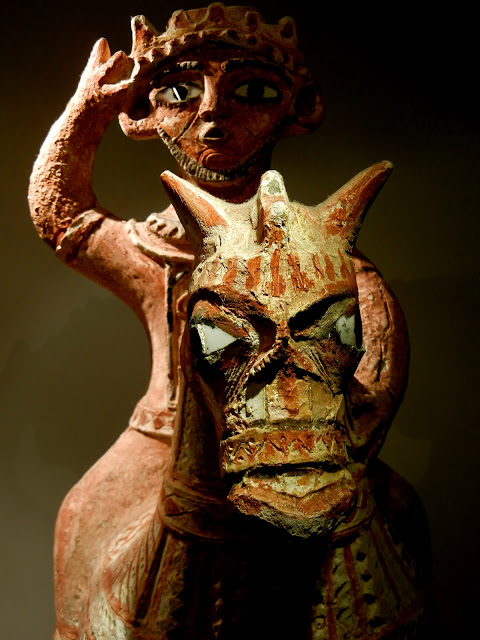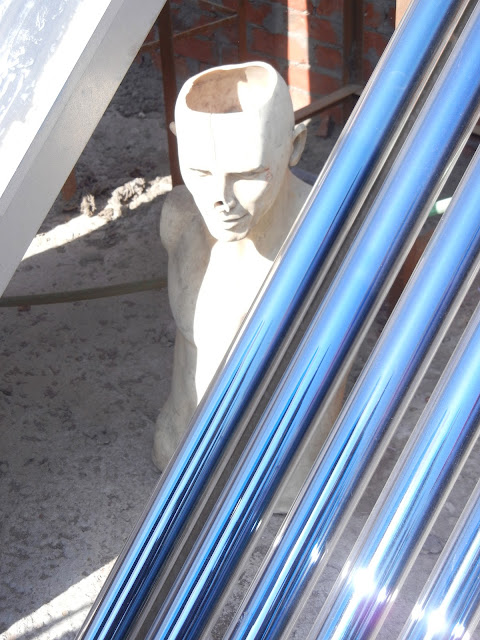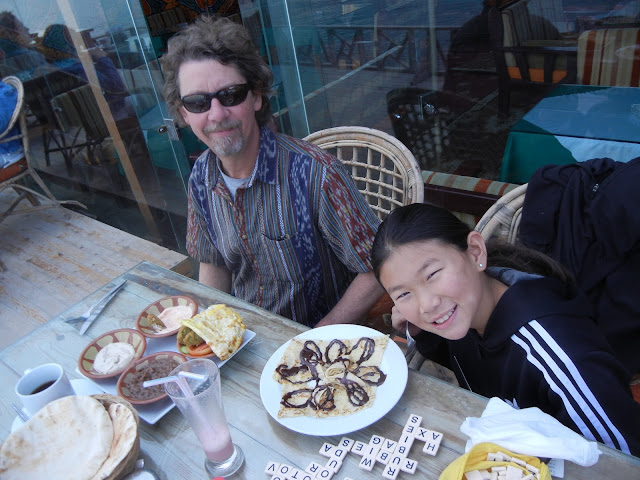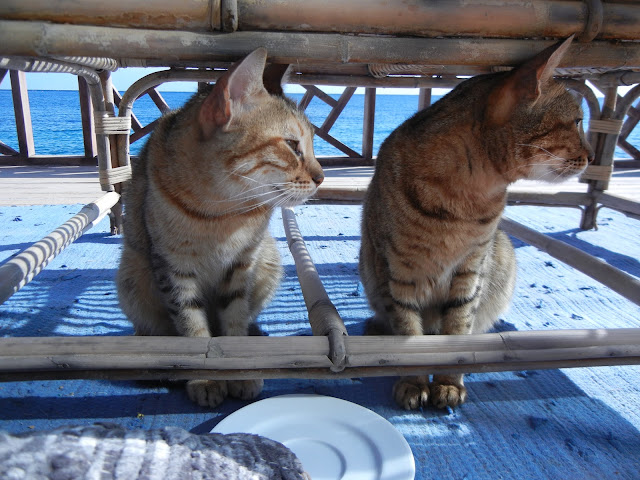There is an edge to Alexandria; people speak a little less
English, are just a little less friendly, at times maybe a little more
desperate. The horse carriage driver man is angry when we won’t take him up on
the offer of a ride, the women selling kleenex (a common item for sale on the
street) grabs on to me and doesn’t let go until I take her hand from my jacket.
We are a little more of an oddity here and see very few others that look like
us.
Everyone said to have low expectations – that Alexandria is
a place that conjres images of past glories but that now, now things are
different and not so glorious. Not scholars of ancient things, we tend to look at the “now”
of things which helped us have a good time and some cool experiences.
Ruby: Paul and Ruby stand on the balcony in Alexandria with the Mediterranean Sea behind us. What a great view from our hotel room!!!
Katie: We stayed at the Egypt Hotel which had a self
operated old fashioned wrought-iron elevator from the - who knows
what era - which made us feel like movie stars. The other perk of the hotel was
the handsome front desk man with dreamy eyes who looked and talked like Omar
Sharif! Sorry no photo.
Lettuce delivery system in Egypt
Egyptians have a sweet tooth – do doubt about it!
This is feteer, a flakey pastry dough with lots of oil and butter that might be filled with
custard for dessert or cheese for a savory dinner. Problem is – you have to buy the entire thing – one reason for the
extra poundage I am accumulating in Egypt.
Ruby: Me with the artist in the exhibition museum!!!!! We
were looking at the exhibition hall because last year someone stole a Van Gogh
painting so they closed every art museum.
Katie: As Ruby says they closed most all of the art museums
in Egypt over a year ago after a Van Gogh was stolen from a museum in Cairo. In
fact the same painting had been stolen twice, once before in the 1970’s and
then was recovered some time later. Since the revolution we think the government probably beefed
up security at antiquities museums because this is what tourists come to see,
but closed those with modern art because they could not guarantee the safety of paintings, sculptures and other works of art. Sad for us – sad for artists working today.
But – at the Museum of Mahmoud Said – Egypt’s greatest 20th
century artist they have 2 small exhibition halls that they said we could visit
- only because we stood there and looked sad that we could not go inside the
big old Italian villa museum that housed Mahmoud's work. It was fantastic! Three of
the artists whose work we were admiring were there and talked to us about art,
their art, art in Egypt, upcoming shows in Cairo.
Me with the artist of a mosaic. One of the 7 wonders of the
ancient world is the lighthouse in this picture. The lighthouse was destroyed in an earthquake
long ago. Another wonder is the pyramids.
Katie: Libraries go back a long way in Alex – to the 3rd
century BC. Apparently they are good places to plunder and destroy so they have come and gone over the centuries. The Bibliotheca Alexandrina opened in 2002 and has
8 million books, art galleries and concert halls and is the cultural call to
fame for Alex these days. We hope it sticks around!
Ruby: The holes in the ceiling in the library are shaped
like eyes and are blue and green to help you see better for reading. Isn’t that
cool?? I still wonder why blue and green help the eyes read but I know it is
true.
A statue in the library art gallery
Ruby took this photo in the library art gallery -
An outfit from the western desert area of Egypt near the oasis of Siwa - a place we hope to visit. There are so many things we saw in the museums here that we have never seen before. Guess Islamic/Muslim artifacts and art don't make it much to the US which is a shame - they are beautiful, sophisticated, unique.
 |
| Ruby's art work!!! |
Fort Qaitbey
Katie: This castle-like place sits on one of the peninsulas
that protects Alex’s harbor. There used to be a lighthouse on this site – as
Ruby mentioned - it was one of the 7 wonders of the ancient world.
Ruby: On the ledge that we were on there was a wall, my mom, Paul and I saw that 3 guys were walking on the wall that guarded the building from too much water and when the last guy was getting up a large wave of water drenched him, then the other guys looked back walked faster, looked back and walked faster.
We ran into a group of high school students at the fort – on
a school field trip we imagine. One offered to take our picture, the cell phones came out
and the paparazzi broke lose! We were THE photo opportunity and English
practicing point – what fun!
and




























































